Tom Sachs on Switzerland, LSD, and the cult of organisation

Tom Sachs has more in common with the Swiss than he would have you believe. The American artist runs a decidedly precise operation in New York governed by a rigorous framework of ten rules – or ‘bullets’ – outlined in the studio’s video manual. And just like the Swiss, above all else, Sachs values punctuality, efficiency, order and fines (‘monetary sacrifices’, as decreed in the manual, for breaking the aforementioned rules). ‘Switzerland has always been in the forefront of my thinking,’ says Sachs, whose current show at Vito Schnabel Gallery in St Moritz rethinks the ‘Swiss brand’.
‘Ever since I went there I always have been fascinated with the “organisation cult” of Switzerland – it’s the kind of thing I’ve always aspired to,’ explains the artist, who issued mock Swiss passports for 24 hours last year during London’s Frieze Week. ‘One of the things we do as human beings to face the inevitable entropy that is our demise, is to spend time organising materials into systems so that we can have rich lives. The horror isn’t that the universe is cruel, but that it’s indifferent.’ (Cue Sachsian bullet #8: Always be Knolling.)
The St Moritz exhibition takes its name from a 1969 Joseph Beuys installation, The Pack, comprising a VW van with 24 wooden sleds trailing behind, each equipped with a felt blanket, a flashlight, and a lump of animal fat. Sachs’ homage slyly references the Pontifical Swiss Guard, with a trio of electric motorcycles named for cities in the African states (Lagos, Mogadishu, Kinshasha) and rigged with weapons and a postmodern survival kit complete with snacks.

The Pack (Lagos), 2018; The Pack (Mogadishu), 2018; The Pack (Kinshasha) 2018; Flag, 2018; all by Tom Sachs. © Tom Sachs. Photography: Genevieve Hanson. Courtesy of Tom Sachs Studio and Vito Schnabel Gallery
Other familiar Alpine tropes – the Swiss Army Knife, wholesome folklore heroine Heidi, the nation’s flag – are reconfigured in Sachs’ alternative Switzerland. Is the image of Swiss perfection a myth? ‘The idea of Switzerland also brings up all kinds of questions about banking and hiding economic resources. But the idea of Switzerland, including its flag (which is the inversion of the Red Cross) and its island-nation status in Europe, has always been this symbol of prestige.’ Sure, Sachs’ sculptures are inherently parodical, but they also invite deeper reflection upon an imbalance that’s become systemic of rich and poor countries alike.
‘People in Switzerland appreciate the depth of Tom’s work, the sincerity of his fascination with Switzerland and his love for a place that leads him to critique,’ says gallerist Vito Schnabel, who has worked with Sachs for more than 15 years. Over the past six months the pair have collaborated on a number of projects, including a fully-functioning mezcaleria in New York that served as a prelude to Sachs’ outing in St Moritz. ‘The physical presence of the sculptures in the exhibition are very compelling – beautiful and strange and sometimes disturbing. But their conceptual framework is just as strong.’
LSD is important because it’s a window into another world, it’s a window to what we can achieve through work.
Sachs has long been drawn to Switzerland’s reputation as a global model of financial prowess, scientific progression, political neutrality, and world-class infrastructure. ‘When you have economic resources as rich as Switzerland you are in a position to mitigate nature in a way that’s unmatched,’ says Sachs. ‘Harnessing the power of nature is the ultimate act of mankind. There’s no place on earth where nature is better cultivated. But that’s not even limited to what we do with the things that we can see in nature.’
The artist continues: ‘The greatest particle collider [in the world] – the laboratory at CERN – has investigated nature on a sub-atomic level and is going deeper than even the Americans have gone. It is unusual for a small European country to lead in such a profound area, literally going farther than anyone else has gone in, and the opposite of the space programme, which is going out.’ Several other works in the show reflect the NASA-obsessed artist’s ongoing fixation with expedition, including the lunar odyssey-inspired Moon (2018).
His work similarly finds itself intertwined with industrial invention, another idiosyncrasy he shares with the Swiss. After all, velcro, cellophane and LSD were invented in Switzerland. ‘It’s amazing that LSD was invented in Switzerland because it’s such a strong symbol of counterculture. I think LSD is important because it’s a window into another world, it’s a window to what we can achieve through work. I’m not a huge advocate of recreational drugs but I do believe it’s important to use anything available to explore. And going inside the mind is one of the least understood sciences and areas of exploration that there is.’
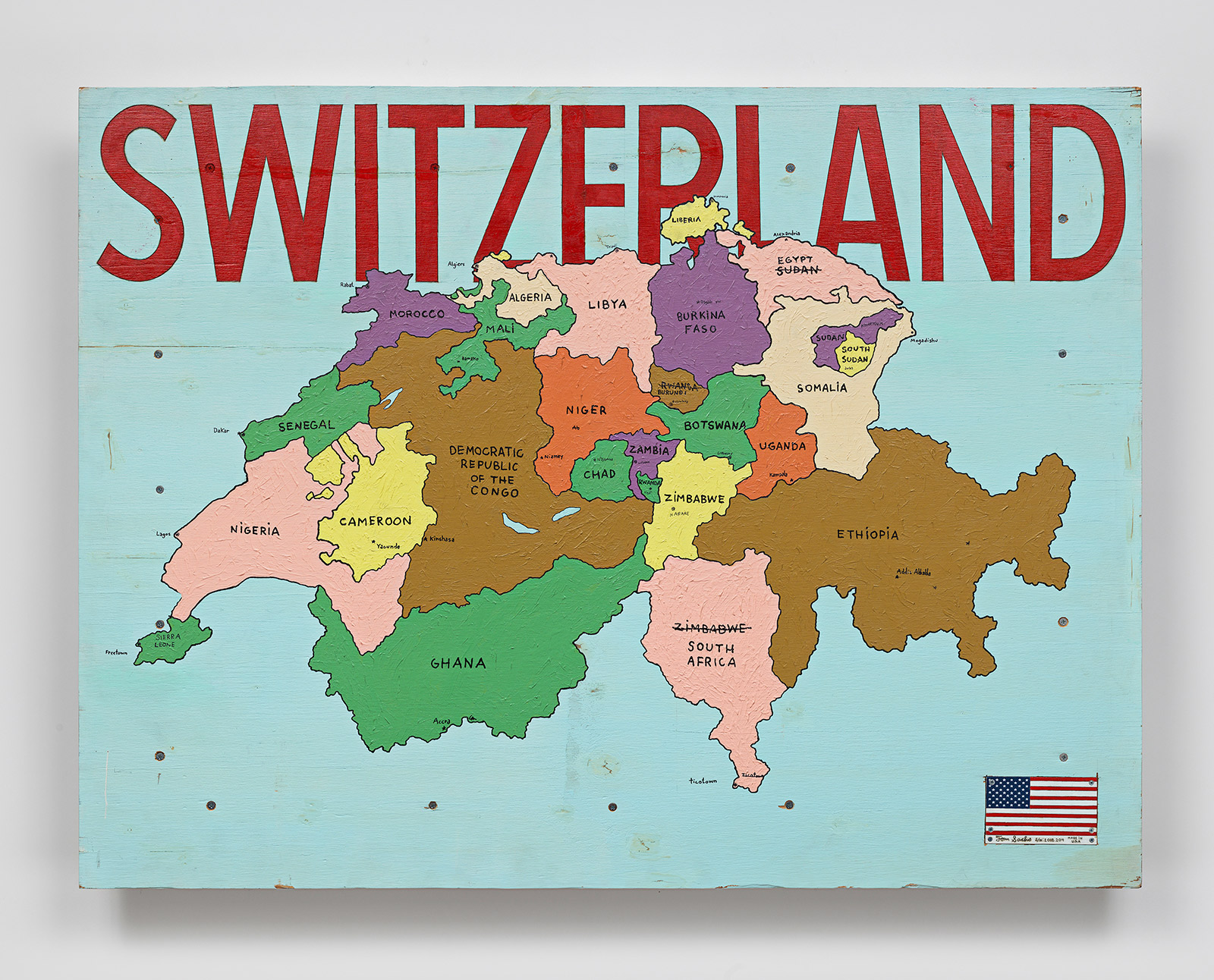
Switzerland, 2018, by Tom Sachs, plywood, Synthetic polymer paint, steel hardware. © Tom Sachs. Photography: Genevieve Hanson. Courtesy of Tom Sachs Studio and Vito Schnabel Gallery
Sachs poses pointed questions about global identity and colonial destabilisation too. In Switzerland (2018), the artist renames the 26 cantons of the Swiss Confederation after Africa’s sovereign states, proposing a redistribution of wealth both economically and culturally. ‘I almost want to invert the most soulful and the most soulless, or the most affluent and the poorest,’ he notes. ‘The main influence of being an American is the art of the African diaspora – we’re built on slavery.’ It’s a stark and sobering reminder of man’s violent history, at odds with the gallery’s pristine Alpine surrounds.
‘Everything in this show – everything the studio makes – is for, or part of, a ritual experience of making the thing itself or another activity in the studio, like something as simple as having a cup of coffee.’ Though Sachs insists his ‘anarchistic workshop’ is more like Cuba than Switzerland, ‘The Pack’ has us convinced otherwise. Drinking coffee poured from a busty, robotised Heidi allows us to revel, just for a moment, in the absurdity of it all.

Heidi, 2018, by Tom Sachs, mixed media. © Tom Sachs. Photography: Genevieve Hanson. Courtesy of Tom Sachs Studio and Vito Schnabel Gallery

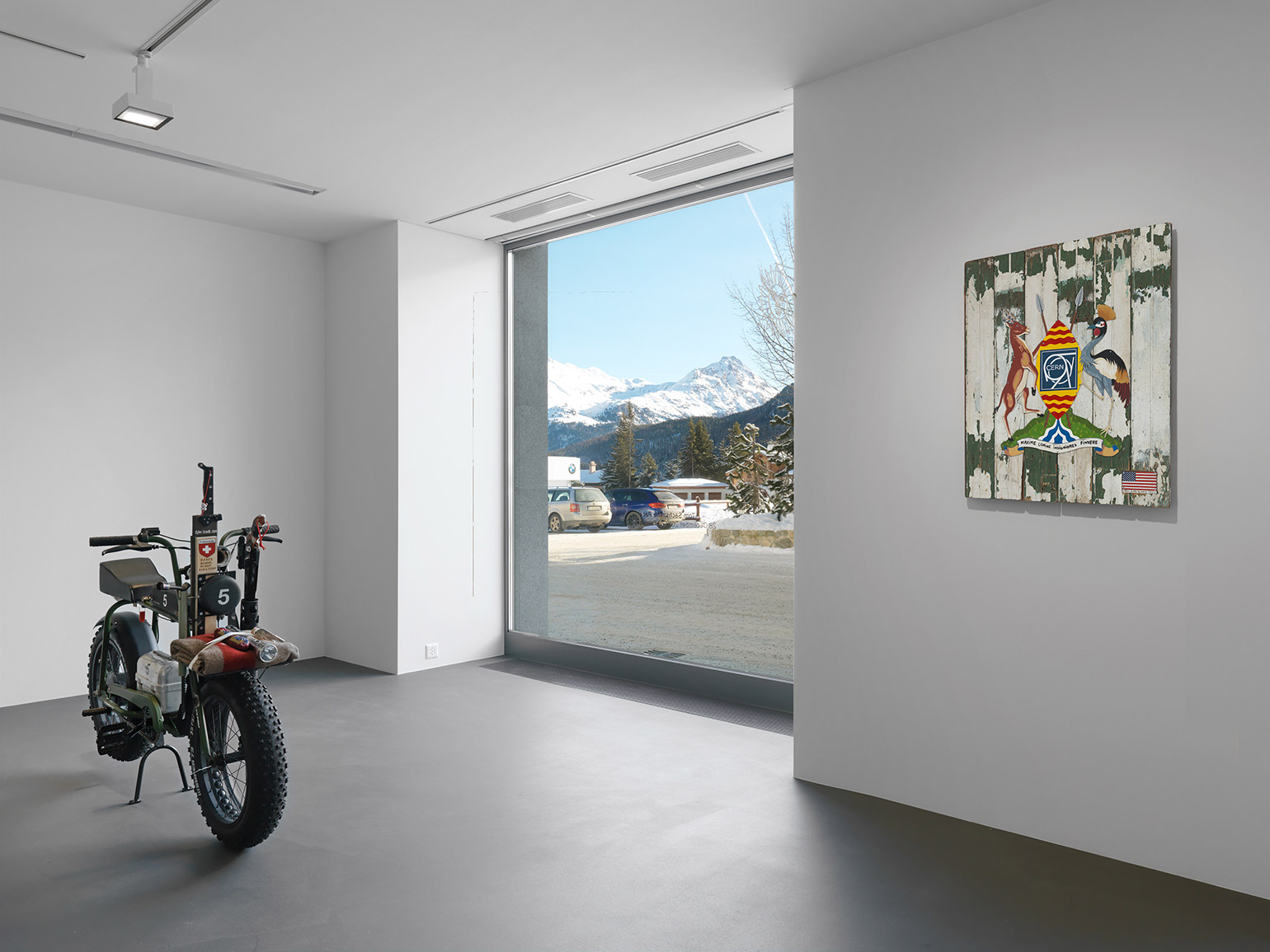
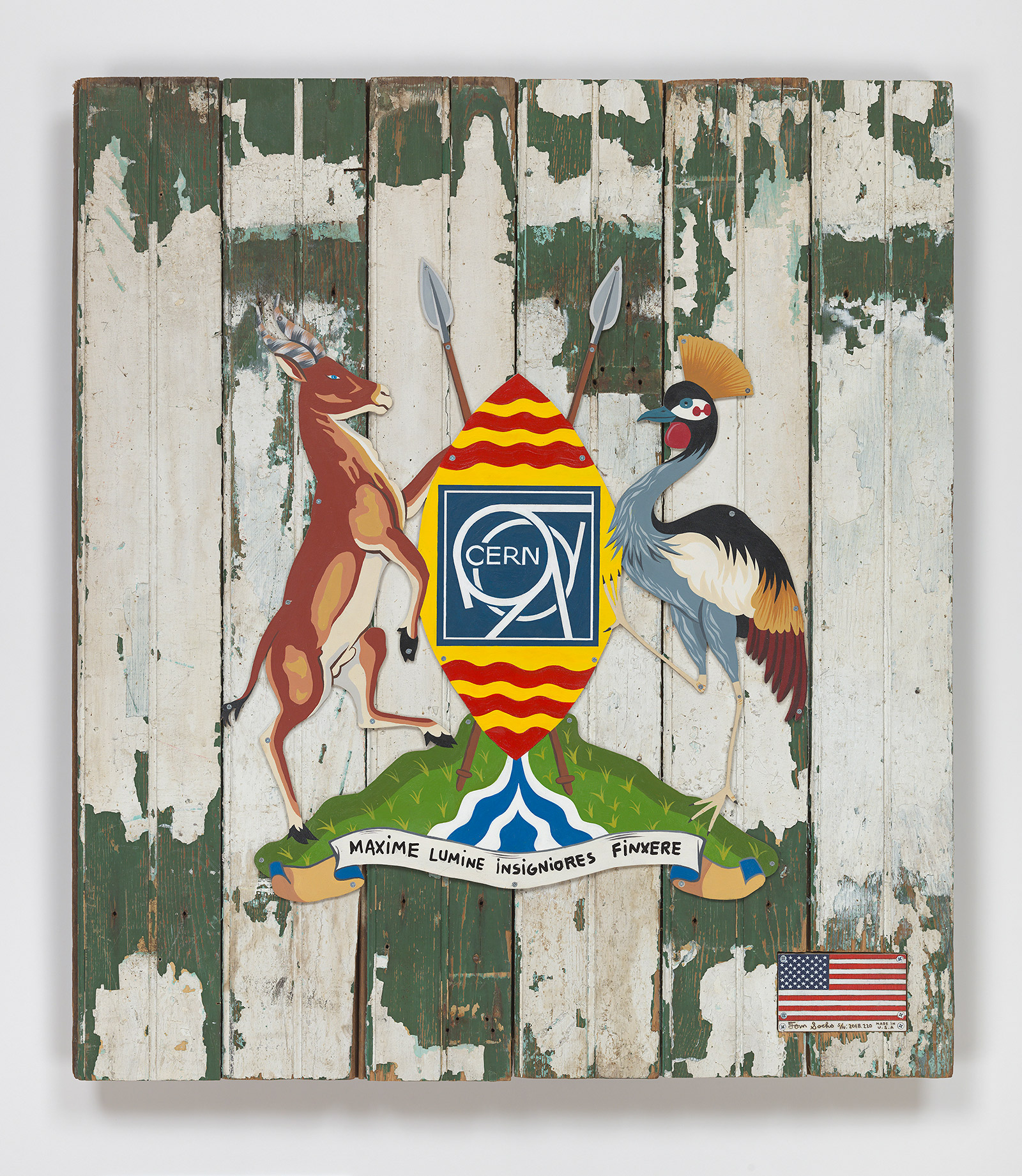
Maximum Luminosity, 2018, by Tom Sachs, mixed media. © Tom Sachs. Photography: Genevieve Hanson. Courtesy of Tom Sachs Studio and Vito Schnabel Gallery



United States, 2018, by Tom Sachs, synthetic polymer paint, steel, pyrography on plywood. © Tom Sachs. Photography: Genevieve Hanson. Courtesy of Tom Sachs Studio and Vito Schnabel Gallery
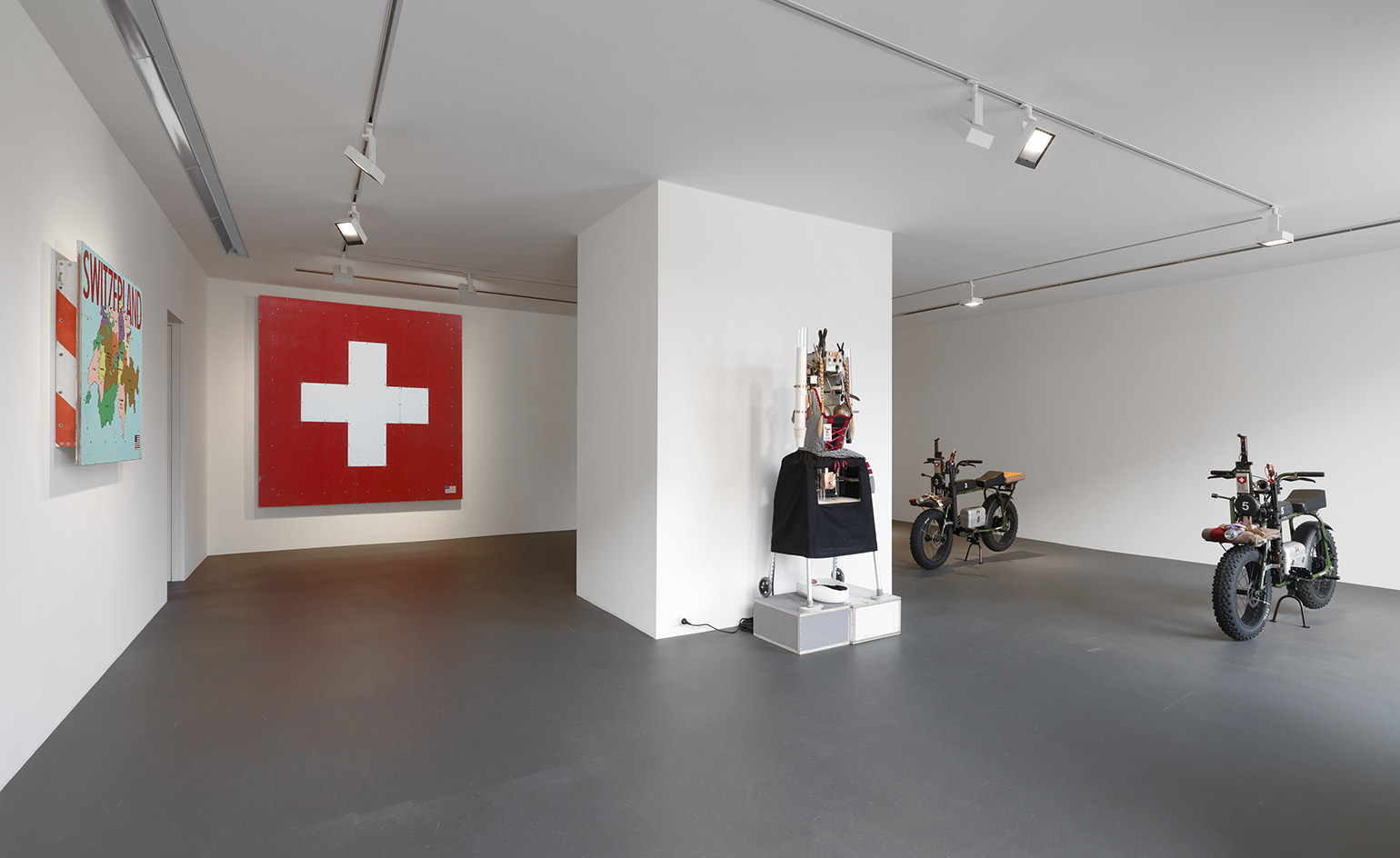
INFORMATION
‘The Pack’ is on view until 3 February. For more information, visit the Tom Sachs’ website and the Vito Schnabel Gallery website
ADDRESS
Wallpaper* Newsletter
Receive our daily digest of inspiration, escapism and design stories from around the world direct to your inbox.
Vito Schnabel Gallery
Via Maistra 37
7500 St Moritz
-
 Extreme Cashmere reimagines retail with its new Amsterdam store: ‘You want to take your shoes off and stay’
Extreme Cashmere reimagines retail with its new Amsterdam store: ‘You want to take your shoes off and stay’Wallpaper* takes a tour of Extreme Cashmere’s new Amsterdam store, a space which reflects the label’s famed hospitality and unconventional approach to knitwear
By Jack Moss
-
 Titanium watches are strong, light and enduring: here are some of the best
Titanium watches are strong, light and enduring: here are some of the bestBrands including Bremont, Christopher Ward and Grand Seiko are exploring the possibilities of titanium watches
By Chris Hall
-
 Warp Records announces its first event in over a decade at the Barbican
Warp Records announces its first event in over a decade at the Barbican‘A Warp Happening,' landing 14 June, is guaranteed to be an epic day out
By Tianna Williams
-
 Leonard Baby's paintings reflect on his fundamentalist upbringing, a decade after he left the church
Leonard Baby's paintings reflect on his fundamentalist upbringing, a decade after he left the churchThe American artist considers depression and the suppressed queerness of his childhood in a series of intensely personal paintings, on show at Half Gallery, New York
By Orla Brennan
-
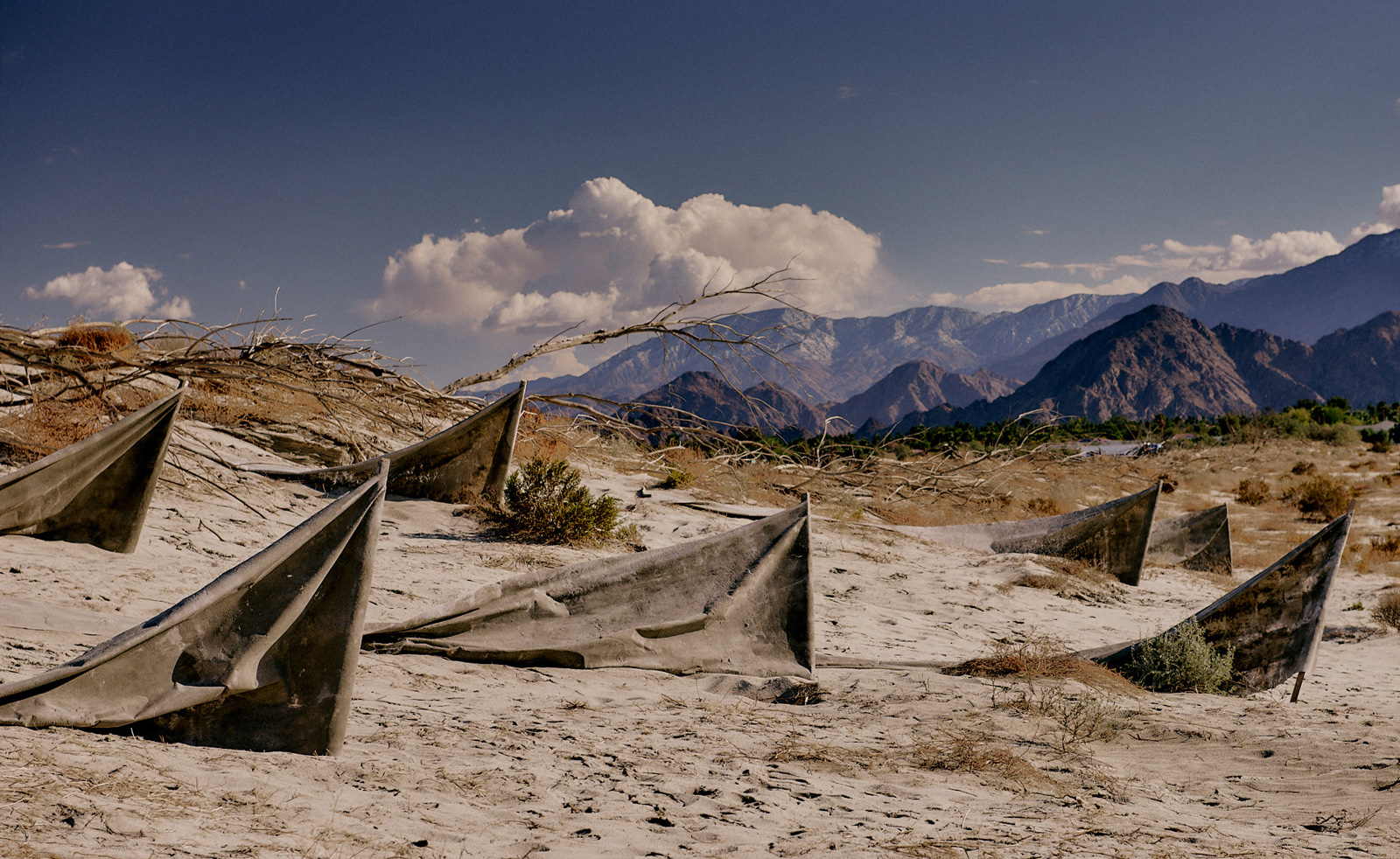 Desert X 2025 review: a new American dream grows in the Coachella Valley
Desert X 2025 review: a new American dream grows in the Coachella ValleyWill Jennings reports from the epic California art festival. Here are the highlights
By Will Jennings
-
 In ‘The Last Showgirl’, nostalgia is a drug like any other
In ‘The Last Showgirl’, nostalgia is a drug like any otherGia Coppola takes us to Las Vegas after the party has ended in new film starring Pamela Anderson, The Last Showgirl
By Billie Walker
-
 ‘American Photography’: centuries-spanning show reveals timely truths
‘American Photography’: centuries-spanning show reveals timely truthsAt the Rijksmuseum in Amsterdam, Europe’s first major survey of American photography reveals the contradictions and complexities that have long defined this world superpower
By Daisy Woodward
-
 Sundance Film Festival 2025: The films we can't wait to watch
Sundance Film Festival 2025: The films we can't wait to watchSundance Film Festival, which runs 23 January - 2 February, has long been considered a hub of cinematic innovation. These are the ones to watch from this year’s premieres
By Stefania Sarrubba
-
 Switzerland’s best art exhibitions to see in 2025
Switzerland’s best art exhibitions to see in 2025Art fans, here’s your bucket list of the standout exhibitions to see in Switzerland in 2025, exploring compelling themes and diverse media
By Simon Mills
-
 What is RedNote? Inside the social media app drawing American users ahead of the US TikTok ban
What is RedNote? Inside the social media app drawing American users ahead of the US TikTok banDownloads of the Chinese-owned platform have spiked as US users look for an alternative to TikTok, which faces a ban on national security grounds. What is Rednote, and what are the implications of its ascent?
By Anna Solomon
-
 Architecture and the new world: The Brutalist reframes the American dream
Architecture and the new world: The Brutalist reframes the American dreamBrady Corbet’s third feature film, The Brutalist, demonstrates how violence is a building block for ideology
By Billie Walker